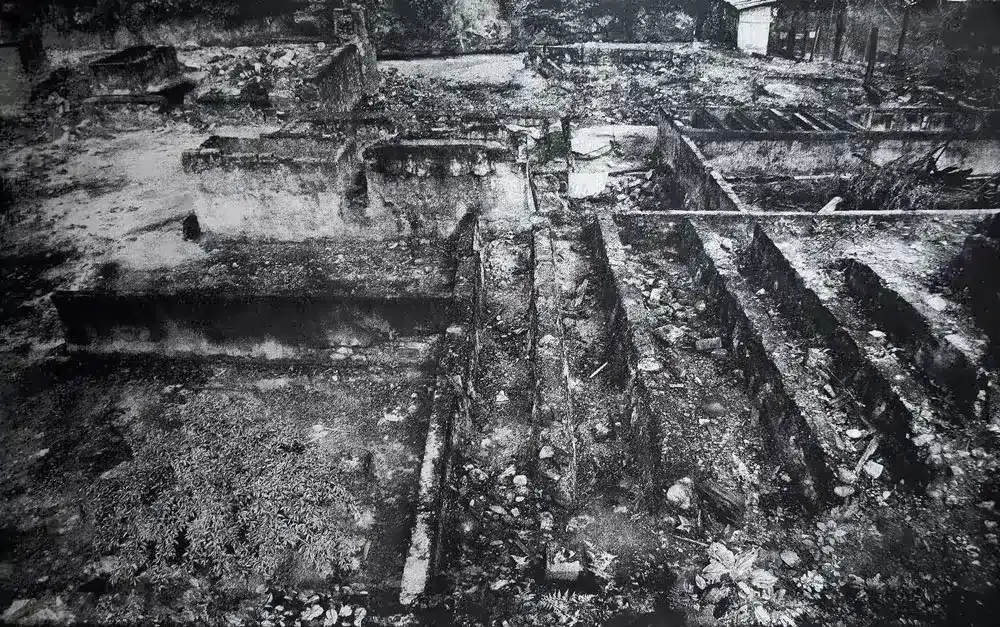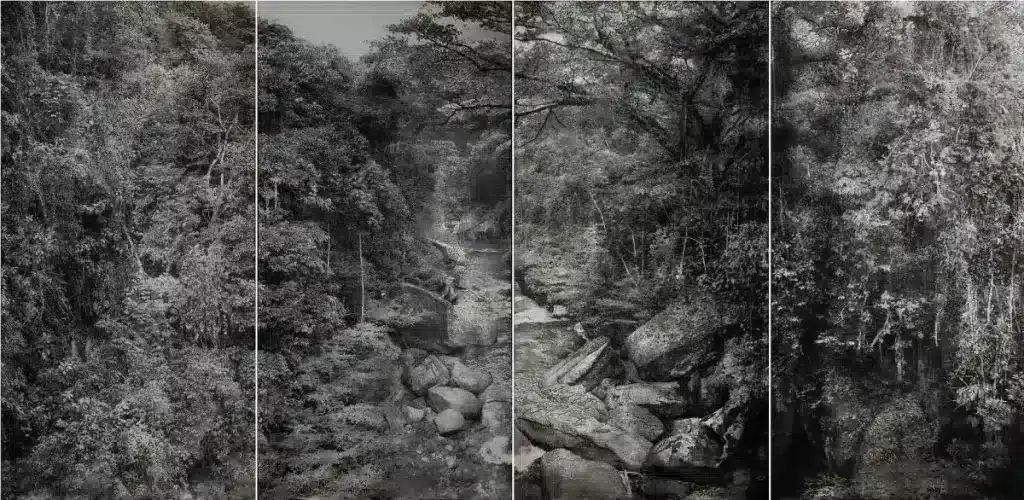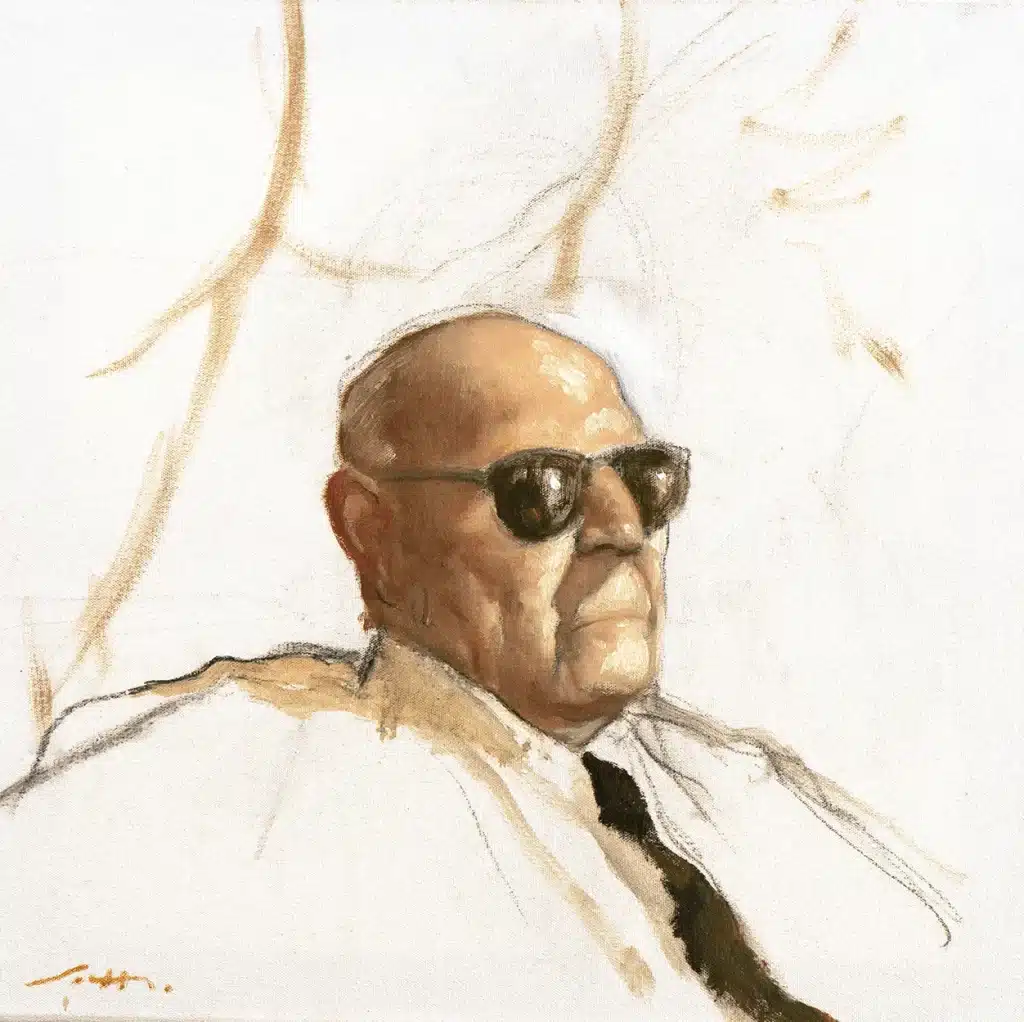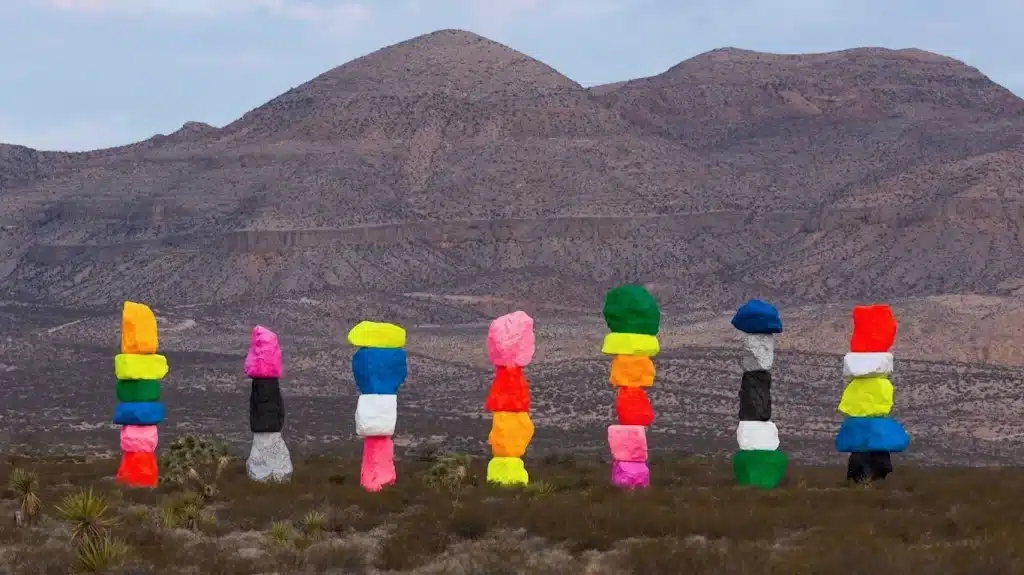Tomás Ochoa is one of the most outstanding artists of the current visual scene in Ecuador and is the one who has been able to carve out an international career with the greatest ease, as attested by the exhibitions in which he has participated in different continents. Literature and philosophy would provide changes of direction to his artistic narratives and his way of conceptualizing, and he begins to use photography and its related media as a regular support that has characterized his proposal to date. Likewise, his critical thinking has sharpened to provoke a work that reflects on conflicts of the present and the past, always supported by research as an indispensable requirement.
Tomás Ochoa is a multimedia artist who has not only used painting and photography as a reference, but has also made videos, installations and resorted to different ancestral substances, as well as pyrotechnics to increase the scope of meaning and significance in his works.

Chronicle
By Tomás Ochoa.
In March 2003, a group of Arhuaco Indians traveled through the base of the Sierra Nevada de Santa Marta, symbolically marking the border of their ancestral territory. The Arhuaco Mamos called this route the Black Line.
It is February 2016, I call my friend the photographer and war chronicler Stephen Ferry to get clues about the places in Colombia with the highest presence of armed groups, I tell him about my project on the Colombian landscape related to violence. Stephen dates me for lunch and shows up with a copy of Violentology his latest book published in 2012. In which he tells how Los Mamos Arhuacos walked for a week along La Línea Negra through dangerous areas under paramilitary control. “Over the next decade its strategy succeeded in reducing violence and strengthening indigenous control of territory. “1 I contemplate the moving images of that chronicle, while its author explains to me that this propitiatory action sought to reestablish the natural balance that had been altered by the presence of the armed groups by resorting to their ancestral rites. I can’t help but think about the epic and resistance dimension of this action apart from how close it is to the idea of a total work of art. This propitiatory rite became a political action, but above all a poetic action.
From this revelation I set out to develop this project in which I try to revisit the action of the Arhuacos taking their foundational intentions to the field of art; touring and documenting various places in Colombia where there was and there is presence of armed groups. Following his imprint to update the poetic sense of “The Black Line” in the context of the peace process of these days; in a search for images that enhance and give new meanings to that primordial gesture: “Walking to heal the territory” I relate it to the situationism where the Derivè leads to a revelation or a psychogeographic discovery.
March arrives, I leave for Meta to start from the geographic center of Colombia in Puerto Lopez, from there I continue -by prescription- to Lejanías whose slopes still show the scars of war, I go in search of the valley that Wade Davis describes in El Rio as the most beautiful valley he had seen in Colombia. It is the Piemonte that crosses the Guejar River. Huge rock formations give rise to natural backwaters of crystalline water. I think: this will soon be full of tourists.
It is already April. Yona, a girl displaced by violence whose uncles were killed by paramilitary groups, tells me: “My village, in the south of Bolivar, would be a paradise if it weren’t for the war; almost no one from outside has been able to see these landscapes” I ask Yona to take me to her village to see, tour and photograph her paradise. Yona goes ahead to ask permission from the guerrilla chief stationed in her village. When I arrive I notice the collusion between the guerrillas, the paramilitaries and the army who have conveniently divided control of the area to collect what some call taxes and others call vaccines.
In May my friend Pedro Franco, who has traveled the world with his camera and his fine irony, shows me the forests of Chocó and the Sierra Nevada. I encourage you to join your eyes to this project, not only that you accept but that you generously open the doors of your home to us. In the following months Yona, Pedro and I secluded ourselves in “La Cicuta” to attack with fire the snapshots of our front road.
Creation process gunpowder on canvas
The images in this project come from photographs of the route enlarged to large dimensions by replacing the pixels with grains of gunpowder which, when burned, are fixed on the surface. The contradiction between the bucolic and paradisiacal appearance of the landscapes and the fire with which they have been captured evokes the paradoxes that arise when analyzing landscape and ecosystem issues in relation to violence. Paradoxically, the presence of armed groups preserved certain ecological niches in Colombia from the advance of progress. Valleys and primary forests in the same natural state as a century ago. This landscape is being altered in recent times rather by the presence of formal and informal mining and that an eventual peace process will change forever.





